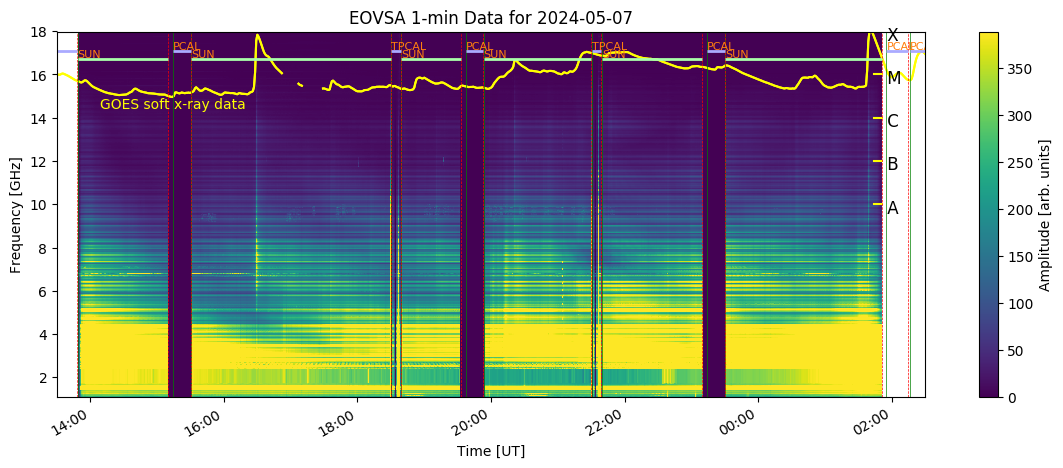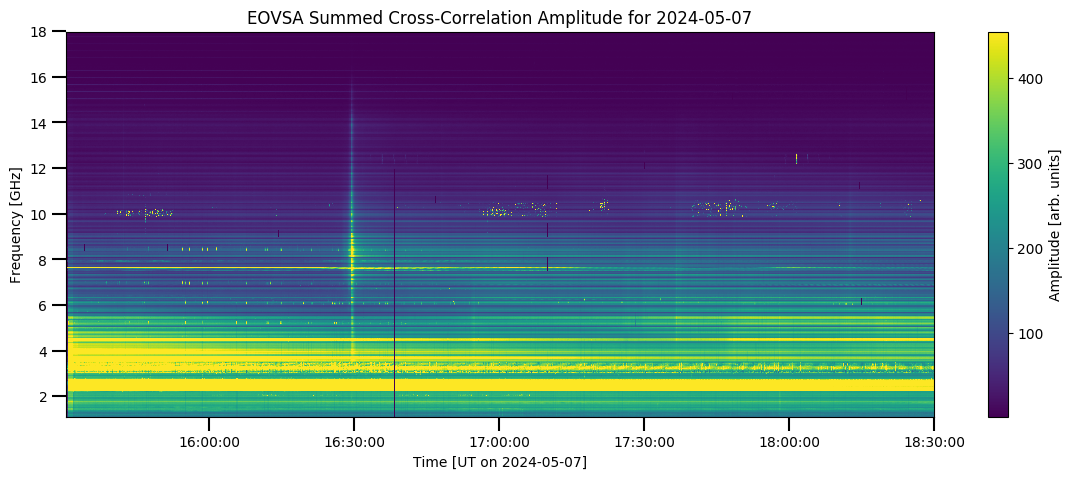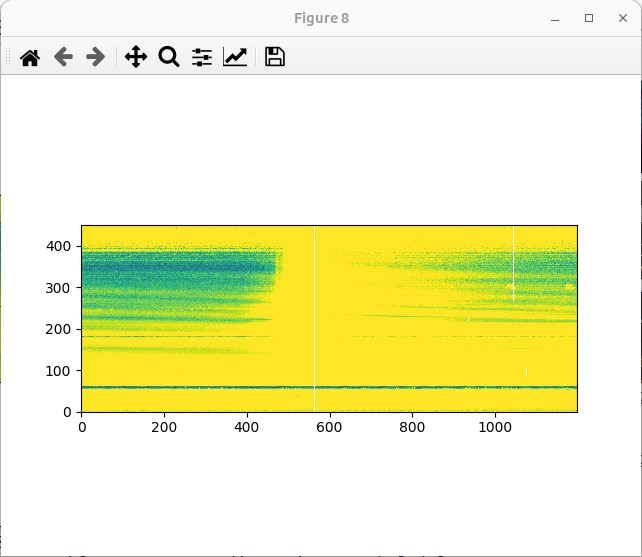Caius' Notes
EOVSA flare spectrograms
Checking the possible EOVSA
Verify the possible flares on the daily EOVSA Solar Dynamic Spectrogram, for example:
http://ovsa.njit.edu/browser/?suntoday_date=2024-05-07
In this example, we are going to analyze the M8.2 flare that happened after 16:00 UT.
For a better flare time precision, a Dynamic spectrogram with short time range at:
http://ovsa.njit.edu/flaremon/
Since 2024-May-05, the Real Time Flare detection figure and its list are also available:
http://ovsa.njit.edu/flaremon/FLM20240507.png http://ovsa.njit.edu/flaremon/flarelist/flarelist_2024-05-07.txt
Using Python 3.8
Login into pipeline machine as user:
ssh -X user@pipeline
Verify the antennas that were working at the day, e.g. more /dppdata1/TPCAL/LOG/TPCyyyymmdd.log
Create the flare directory at /data1/dgary/solar/, e.g:
mkdir 20240507_M8flare cd 20240507_M8flare
Load the Python 3.8 environment:
bash loadpyenv3.8 ipython --pylab
In Python, enter the following:
from eovsapy import flare_spec as fs from eovsapy.util import Time
To download the IDB directories form the SQL cloud, enter the flare interval as:
files = fs.calIDB(Time(['2024-05-07 16:20','2024-05-07 16:35']))
If the IDB already exist, they can be read as:
files = ['IDB20240507162024','IDB20240507163024']
When all the antennas were fine, enter the following:
out, spec = fs.inspect(files)
But, if one or more antennas weren't working, enter the list of the good ones as:
out, spec = fs.inspect(files, ant_str='ant1-6 ant8-9 ant11-13')



